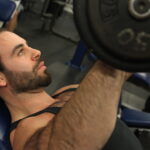DEAR MAYO CLINIC: With the recent COVID-19 pandemic, I have stopped going to the health club, and I have gained the “COVID-19 pounds.” Would running be a good way to lose this weight? I have heard that running is hard on the joints.
ANSWER: As the COVID-19 pandemic has continued, it has created some unique situations for people in terms of weight gain and loss, and with respect to finding and embracing new exercise opportunities. Everyone’s situation is different. So, while running is a good form of cardiovascular activity, deciding if it is a good choice for you depends on a few factors.
To best answer your question, it’s important to ask yourself a few questions. Although we may have all been born to run, running is not for everyone. The most obvious question is: Do you like to run? But you also should consider your readiness to run. Factors that influence your readiness to run include: age, weight and body mass index.
Your general health and fitness level. Are you in otherwise good shape minus the extra pounds? Have you been working out at all in the past few months? Are there any other medical conditions that limit your fitness?
Running history. If you are a novice, your rate and distance will be different than someone who has previously run distance events, for instance.
Cardiovascular and musculoskeletal health. Do you have any existing heart issues or concerns? Do you have arthritis or a history of sprains or breaks? You should consult with your health care provider and physical therapist if you have cardiovascular and/or musculoskeletal health issues. If you have severe arthritis or artificial joints, there are safer ways to burn calories without overstressing your joints.
Running is one of the simplest natural exercises available to us. All we have to do is step into our sneakers and go outside. It is a great way to burn calories. However, running will help with weight loss only if it is a sustainable program — meaning weeks and months.
For every mile run, the average person will burn approximately 100 calories. The good news is that if you are not ready to run, you may start off with walking, which burns about the same amount of calories. If, over a week’s time, you walk or run 35 miles, you would lose 1 pound per week. This is, provided that you do not increase your caloric intake.
It also is important to make changes gradually, so your body has time to adapt. For instance, if you have never run before, you don’t want lace up your sneakers and head out for 10 miles on your first day or even your first week. Your body will not respond favorably. Our tendons, ligaments, bones, joints, cartilage, vertebrae and discs can all adapt and become stronger if we do not ask them to do too much too early.
My recommendation is that if you are new to running, start off with walking, then progress to bouts of walk/running, and gradually increase your running intervals until you can run continuously without pain. Studies show significant benefits from interval aerobic exercise.
A simple way to make sure that you are not over stressing your cardiovascular or musculoskeletal systems is called the talk test. You should aim to run hard enough that you feel that you are working somewhat hard but not so hard that you can’t have a conversation.
I also recommend that novice runners not join up with faster, more experienced athletes right away. Two things can happen if you run too fast too soon. First, you are likely to get injured. And second, when you run too fast, your body chooses to burn carbohydrates in preference to fat. Running hard too often will result in excessive release of stress hormones, such as cortisol, which can inhibit the thyroid and cause weight gain.
Slow and steady is ideal, as easy running will cause a number of favorable adaptations, such as increased size and number of mitochondria (fat burning engines), and capillary density in your muscles. Your body also will recover much more quickly from slow, steady runs.
One way to determine your ideal run rate is to do a quick calculation of your maximum aerobic heart rate. If you are in good health, subtract your age from 180. The resulting number is your target heart rate. When you run, you will burn more fat if you can keep your heart rate below this target number.
When you are just starting to run or walk/run, it is good to start with three or four days per week. On other days, consider cross training exercises, such as stretching, yoga, swimming, weight training, cycling or skating. These forms of exercise will help you improve fitness and burn calories with less sudden stress on your musculoskeletal system.
If you focus too much on just running as a new runner, you are at higher risk of exceeding your tissues’ capacity to adapt, which all too often results in an injury. It is important to be aware of your body and any warning signs of injury.
Forces going through the legs while running can be up to 12 times your body weight. Running within incorrect form or with too much weight can easily result in running injuries. Some studies indicate that as many as 80% of runners experience a running injury every year. Beginners are at a higher risk than seasoned runners of developing injuries. If you have had a running injury in the past, you are at greater risk of running injuries.
Many runners will feel various levels of pain or discomfort and take ibuprofen or other nonsteroidal anti-inflammatory drugs before running. I would discourage this. If you experience some minor pain that eventually improves as you run, go cautiously. Perhaps try stretching or warming up longer before you run.
If you experience pain while running that continues to worsen as you run, it is best to stop. If you experience pain that worsens after you have completed your run, when you sleep or is accompanied by swelling, it is also ideal to limit running until you’ve had a conversation with a health care professional.
Running is a good addition to your overall strategy for weight loss, but it is important to incorporate lifestyle changes, as well. If you listen to your body and run smartly, you can reap a lifetime of benefits, including weight maintenance, improved cardiovascular function, a stronger musculoskeletal system and improved mental health.
— Jeff Carson, D.P.T., Physical Therapy, Mayo Clinic, Jacksonville, Florida




